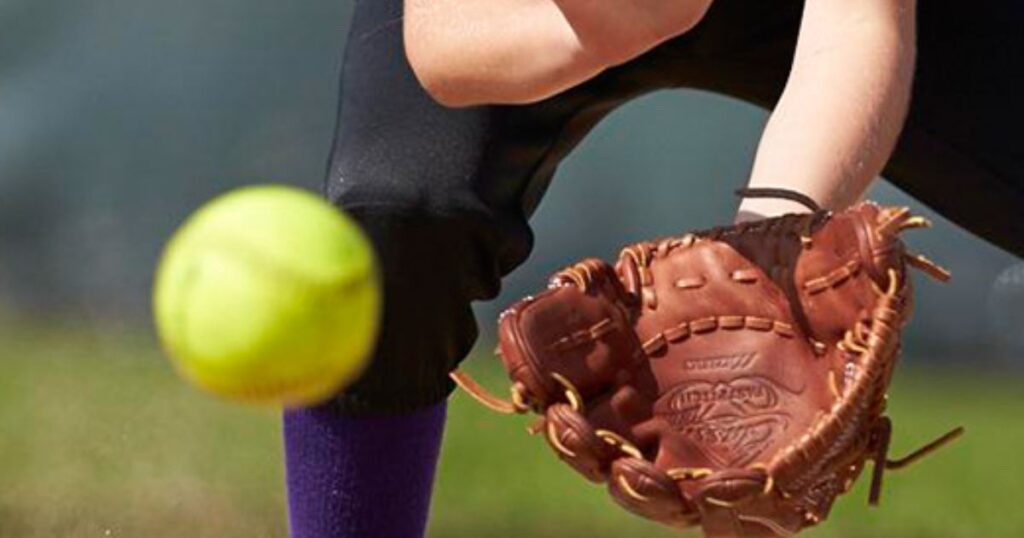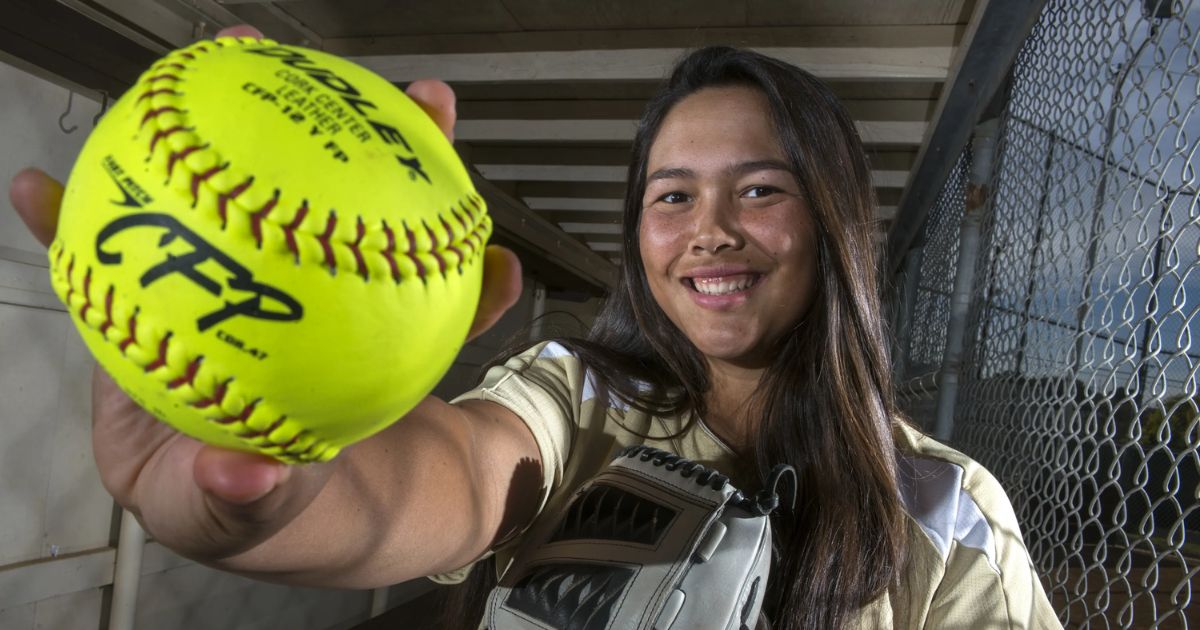Softball is a popular sport that has been enjoyed by millions of players and fans worldwide for over a century. The game’s simple yet competitive nature makes it a great pastime for people of all ages.
You may have found yourself wondering, What is softball made of? In this comprehensive exploration, we will delve into the materials and construction of softball equipment, including the ball itself, bats, gloves, and safety gear.
Understanding what softball is made of is essential for players, fans, and those interested in the sport to appreciate the game’s equipment, its evolution, and how these components impact the playing experience and safety.
The Softball: A Core Component
At the heart of the game of softball is, of course, the softball itself. Softballs are specially designed balls used in the sport, and they are carefully crafted to meet certain standards and requirements.
| Component | Materials Used |
| Softball Core | Cork, rubber, or a combination of both |
| Softball Cover | Leather, synthetic materials (e.g., polyurethane or vinyl) |
| Softball Size and Weight | Standardized size and weight for fastpitch and slowpitch |
| Softball Compression | Different compression levels for various playing styles |
The Core
The core of a softball is typically made of a combination of materials to achieve the desired weight, durability, and performance. Softballs can have a core made from materials such as cork, rubber, or a mixture of the two.
The choice of core material impacts the ball’s density and the way it responds to impact, influencing factors like speed and distance when it’s hit.
The Cover
The outer layer of a softball is its cover. Softball covers are traditionally made from leather, though synthetic materials like polyurethane or vinyl are also used in modern softball manufacturing. Leather covers are known for their durability and performance, as they can withstand repeated impacts without getting easily scuffed or damaged.
They also offer a good grip for pitchers and fielders. Synthetic covers are more cost-effective and can be easier to maintain, but they may not provide the same feel and performance as leather.
Size and Weight
Softballs are standardized in terms of size and weight. In fast pitch softball, the ball typically measures 12 inches in circumference and weighs between 6.25 to 7 ounces. Slow pitch softballs, on the other hand, are slightly larger, with a circumference of 11 or 12 inches and a weight of 6.5 to 7.5 ounces. Softball weight is a crucial factor, as these size and weight regulations are in place to ensure fair play and a consistent experience for all players.
Compression and Bounciness
Softballs are designed with specific compression and bounciness characteristics. Compression refers to how much the ball deforms upon impact.
Softballs are categorized into different compression levels, with lower compression balls being harder and more suitable for fast pitch, and higher compression balls providing more bounce and are typically used in slow pitch. These variations allow players to choose balls that match their playing style and preferences.
The Bat
In softball, the bat is an essential tool for the batter, and it plays a crucial role in determining how the game unfolds.
Material
Softball bats are typically made of materials such as aluminum, composite, or wood. Aluminum bats are common in fast pitch softball due to their durability and lightweight design, which allows for faster swings.
Composite bats are known for their performance-enhancing features, as they are engineered to optimize the trampoline effect upon impact, resulting in increased batted ball speed. Wood bats are mainly used in slow pitch softball and provide a more traditional feel but can be less forgiving in terms of performance.
Length and Weight
The length and weight of a softball bat are crucial factors in determining how well a batter can handle the bat. In most leagues, there are regulations that dictate the maximum length and weight of bats to prevent unfair advantages.
Players need to choose a bat that suits their strength and hitting style. Too heavy a bat can result in slower swing speeds, while too light a bat might not provide enough power.
Barrel Diameter
The barrel of a softball bat refers to the part of the bat that makes contact with the ball. In fast pitch softball, the maximum barrel diameter is typically 2 ¼ inches. In slow pitch, the maximum diameter can be larger, often around 2 5/8 inches. The barrel’s size affects the hitting area, sweet spot, and, consequently, the ease of hitting the ball.
Grip and Handle
The grip and handle of a softball bat are designed to provide comfort and control to the batter. Different bats come with various grip materials and patterns to accommodate different hand sizes and preferences. The handle’s thickness can also vary, offering players options for a better grip.
The Glove

Fielding is a critical aspect of softball, and the glove is a player’s primary tool for making successful plays.
Material
Softball gloves are typically made of leather, synthetic materials, or a combination of both. Leather gloves are known for their durability and ability to mold to a player’s hand over time, providing a customized fit.
Synthetic gloves, on the other hand, are often more affordable and require less break-in time. The choice between leather and synthetic depends on the player’s preferences and budget.
Webbing
The webbing on a softball glove is the pattern of leather or fabric that connects the thumb and fingers. It plays a significant role in catching and trapping the ball. Softball gloves come in various webbing styles, such as closed web, open web, H-web, and I-web.
The choice of webbing can be a matter of personal preference or the player’s position on the field.
Size and Fit
Softball gloves come in various sizes to accommodate different positions and player preferences. Infielder gloves are usually smaller and more shallow to allow for quick transfers and throws, while outfielder gloves are larger to provide better reach and catching ability.
Catcher’s mitts are heavily padded to protect the hand from fast pitches. Ensuring a proper fit is crucial to maximize performance, as an ill-fitting glove can lead to missed catches and discomfort.
Pocket Depth
The depth of the pocket in a softball glove is a critical factor for fielders. A deeper pocket can secure the ball more effectively but might make transferring the ball to the throwing hand slightly slower.
Infielders often prefer a shallower pocket for quick plays, while outfielders may opt for deeper pockets to secure long throws and high fly balls.
Safety Gear
Safety is a top priority in softball, and players use various pieces of equipment to protect themselves from injury.
Helmets
Helmets are essential for both batters and base runners in softball. They are typically made of durable materials like plastic or fiberglass and feature padding on the inside for comfort and protection. Batting helmets also come with a facemask or cage to shield the batter’s face from errant pitches.
Face Guards and Fielder’s Masks
Infielders, particularly pitchers and corner infielders, may choose to wear protective face guards or fielder’s masks. These are made of lightweight materials like metal or high-impact plastic and are designed to prevent facial injuries from line drives or hard-hit ground balls.
Catcher’s Gear
Catcher’s gear is specialized equipment that includes a helmet with a facemask, chest protector, leg guards, and a mitt. These pieces are constructed with thick padding and reinforced materials to protect catchers from the high-speed pitches and foul tips they often encounter.
Sliding Pads
Base runners often use sliding pads made of foam or rubber to protect themselves when sliding into bases. These pads help prevent abrasions, cuts, and other injuries that can occur when sliding on the hard dirt or turf.
The Evolution of Softball Equipment
Over the years, softball equipment has evolved significantly, driven by advancements in materials and technology, as well as changes in the game’s
rules and regulations.
The Evolution of Softballs
In the early days of softball, balls were often homemade, with cores made from a variety of materials like rubber, yarn, and even fruit. Leather covers were common, but synthetic materials were less prevalent. As the sport became more organized, standardized balls and materials were introduced to ensure fairness and consistency.
The Transformation of Softball Bats
Historically, softball bats were made of wood, but this changed with the introduction of aluminum bats in the 1970s. These bats revolutionized the game by offering a larger sweet spot and more power to the hitter.
Composite bats followed, introducing new materials and designs to maximize performance. The evolution of bat technology has led to regulations to limit their performance and maintain a balance between offense and defense.
Advancements in Glove Design
Gloves have seen significant improvements in design and materials. Modern gloves are crafted with precision, and manufacturers have introduced innovations such as enhanced pocket depth, improved padding, and lightweight yet durable materials. These developments have made fielding more efficient and comfortable for players.
Safety Innovations
Safety gear in softball has evolved to provide better protection and comfort. Helmets, for example, now feature better ventilation and improved facemask designs.
Catcher’s gear has become more lightweight and protective, allowing catchers to move more freely while staying safe. Advances in materials and design have made softball a safer sport for participants.
FAQs
1. What are the key differences between fastpitch and slowpitch softballs?
In fastpitch, the ball is smaller, and the game is faster-paced, while slowpitch uses larger balls and is typically more leisurely, with different pitching styles and rules.
2. How do I choose the right softball bat for my playing style?
Select a bat that aligns with your strength and preferences, considering factors like material, length, weight, and barrel diameter for optimal performance.
3. Why is safety gear important in softball, and what should I wear to protect myself while playing?
Safety gear, such as helmets and face guards, is crucial to prevent injuries from high-speed pitches and hard-hit balls. Consult league regulations for specific safety gear requirements in your area.
Conclusion
The world of softball is not just about playing the game; it’s also about understanding the equipment that makes it all possible. Softballs, bats, gloves, and safety gear are carefully designed and constructed to meet the needs of players and ensure a safe and competitive playing environment.
As technology and materials continue to advance, we can expect further innovations in softball equipment, potentially enhancing the game’s performance and safety even more. You’re a seasoned player or someone new to the sport, knowing what is softball made of can deepen your appreciation for this beloved pastime and help you make informed choices when it comes to selecting your gear.








